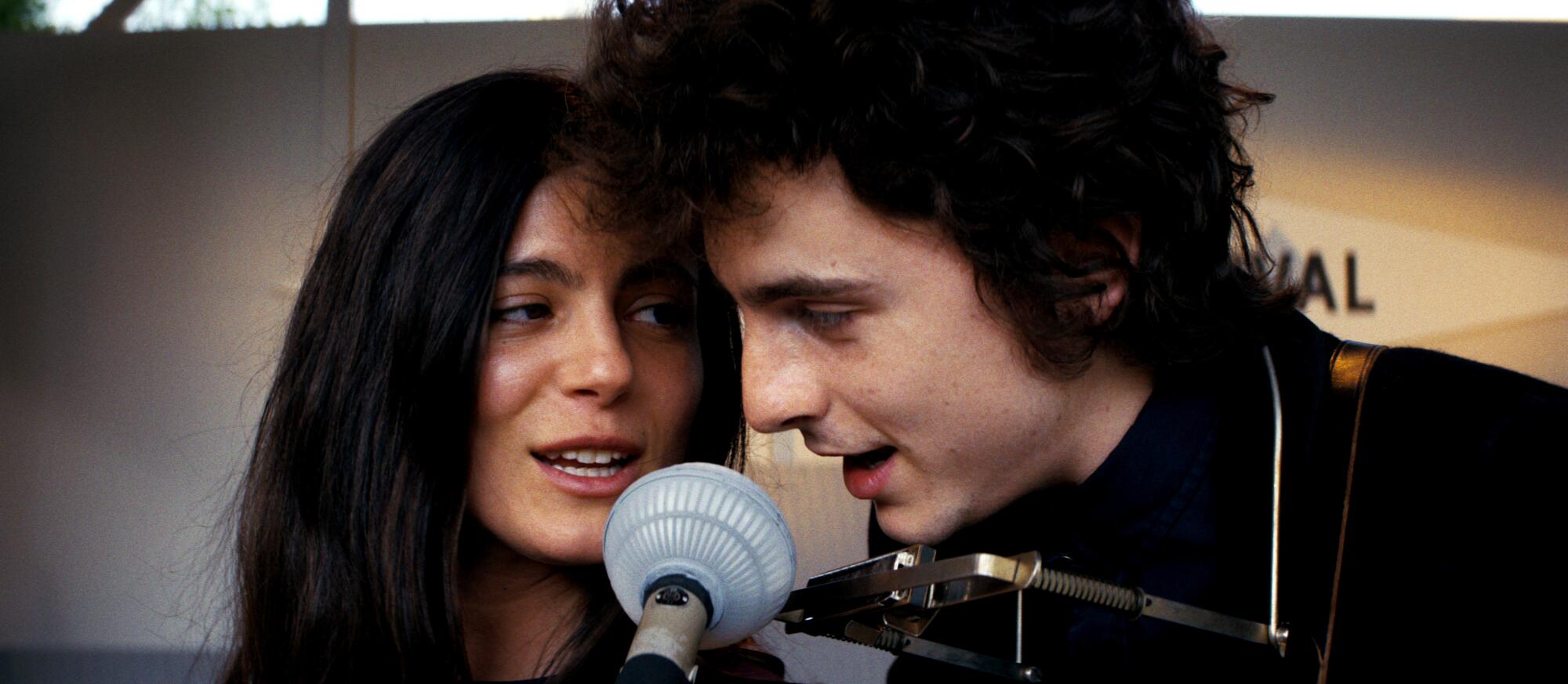‘Springsteen’: The top 9 pop-music biopics in Oscars history
What is it about the musical biopic that has inspired so much Oscar love? Is it the genre’s front-row seat on the turbulent, provocative, culture-shifting lives of artists we’ve worshiped from afar? Is it the transformational, go-for-broke acting showcase it affords, and the painstaking period recreation so essential to the journey back in time? Or is it simply the enduring power of popular music and the icons who’ve created and performed it?
With the release of writer-director Scott Cooper’s biographical drama “Springsteen: Deliver Me from Nowhere,” starring kudos magnet Jeremy Allen White in an immersive portrayal of The Boss circa 1982, it feels like the perfect time to flash back on some of the most honored pop-music biopics in Oscars history.
‘A Complete Unknown’ (8 nominations)
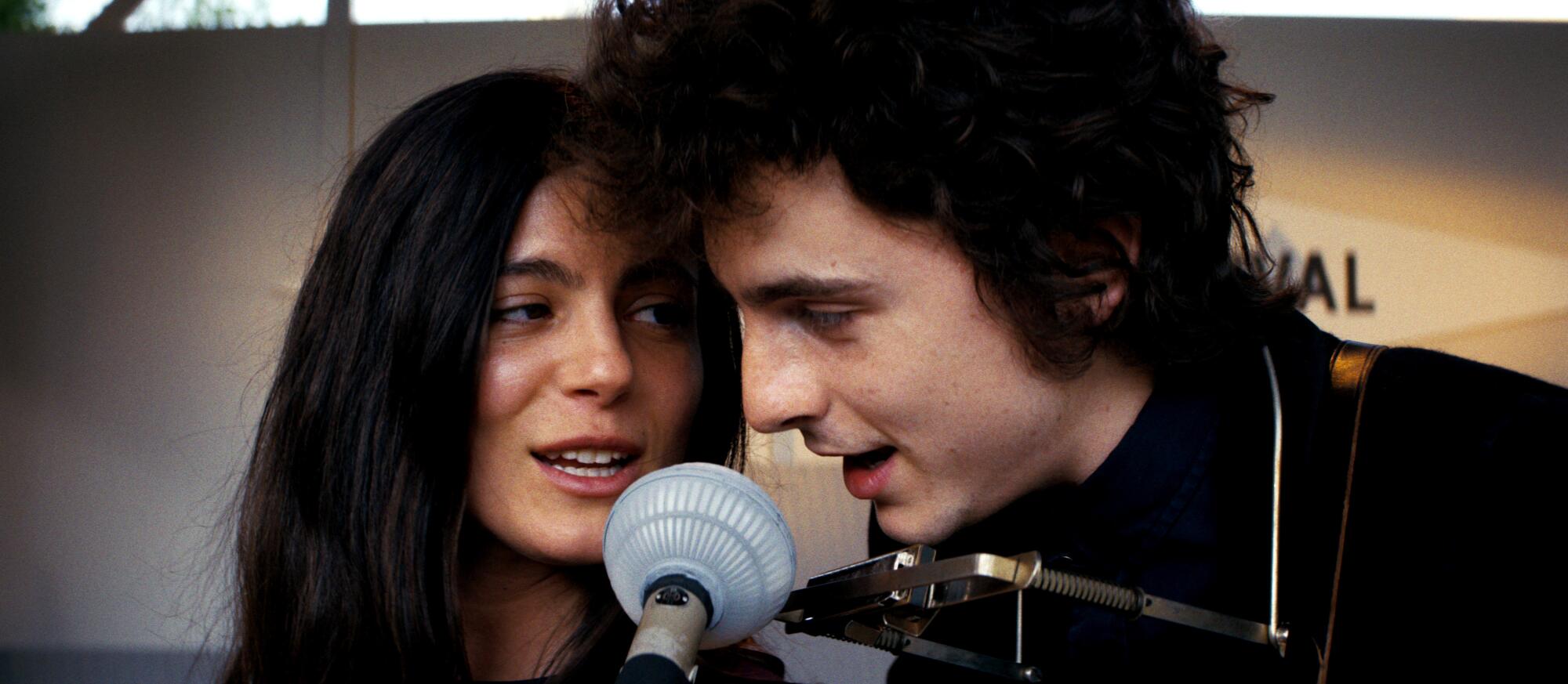
Monica Barbaro and Timothée Chalamet in “A Complete Unknown.”
(Searchlight Pictures)
This nostalgic snapshot of the early career of legendary folk singer Bob Dylan racked up eight Oscar nominations, including for picture, director (James Mangold), adapted screenplay (Mangold and Jay Cocks), and actors Timothée Chalamet (Dylan), Edward Norton (Pete Seeger) and Monica Barbaro (Joan Baez). Though it exited the awards ceremony empty-handed (it also earned nods for sound and costume design), the film enjoyed solid awards-season grosses, largely positive reviews and further burnished Chalamet’s cred as a versatile and chameleonic leading man.
‘Elvis’ (8 nominations)
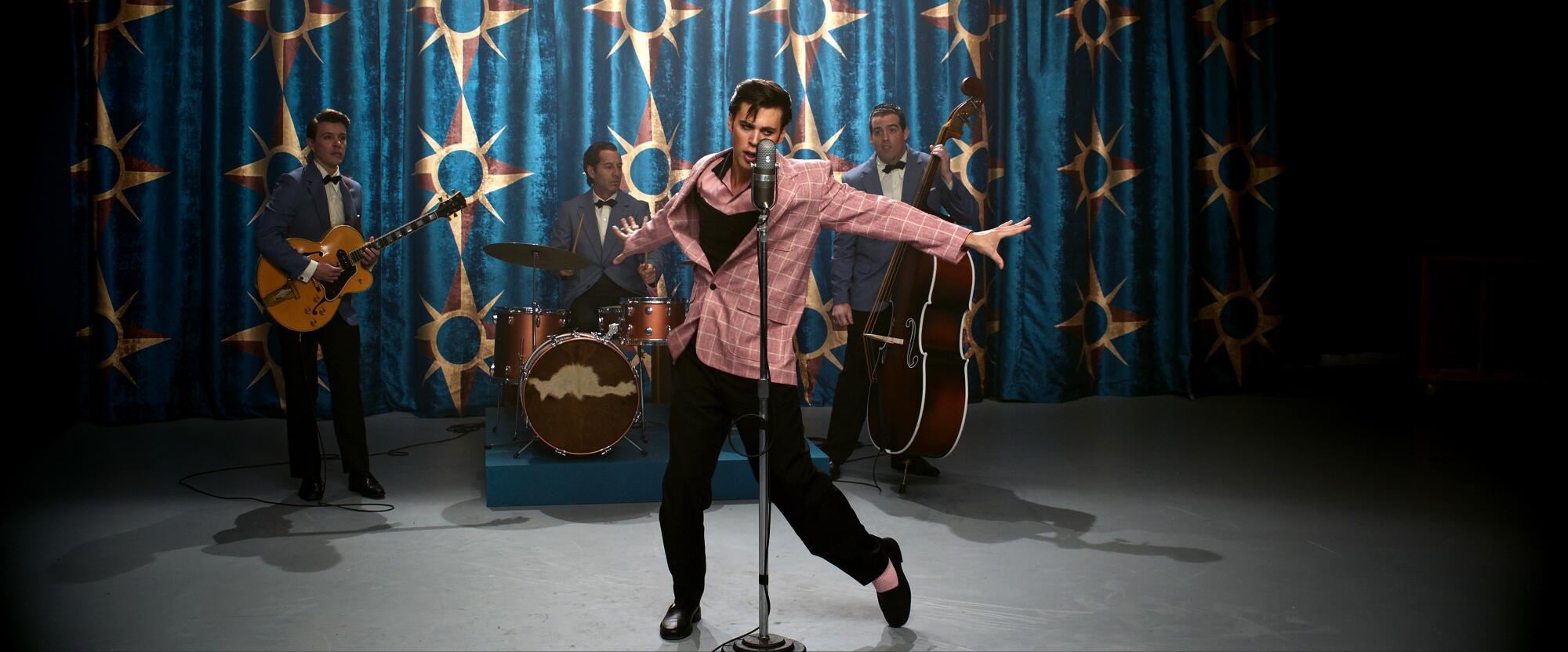
Austin Butler in “Elvis.”
(Warner Bros. Pictures)
Tracking the meteoric rise and fall of the King of Rock ’n’ Roll, this electric, eclectic, midcentury biopic impressed critics, shook up the box office and made a star out of Presley proxy Austin Butler. (Go ahead, say it: “Thank you, thank you very much!”) Though “Elvis” left the building on Oscar night with zero wins from eight nods — including picture, lead actor, cinematography and film editing — the movie brought the hip-swiveling singer back into the zeitgeist and gave director Baz Luhrmann yet another feather in his movie-musical cap.
‘Yankee Doodle Dandy’ (8 nominations)
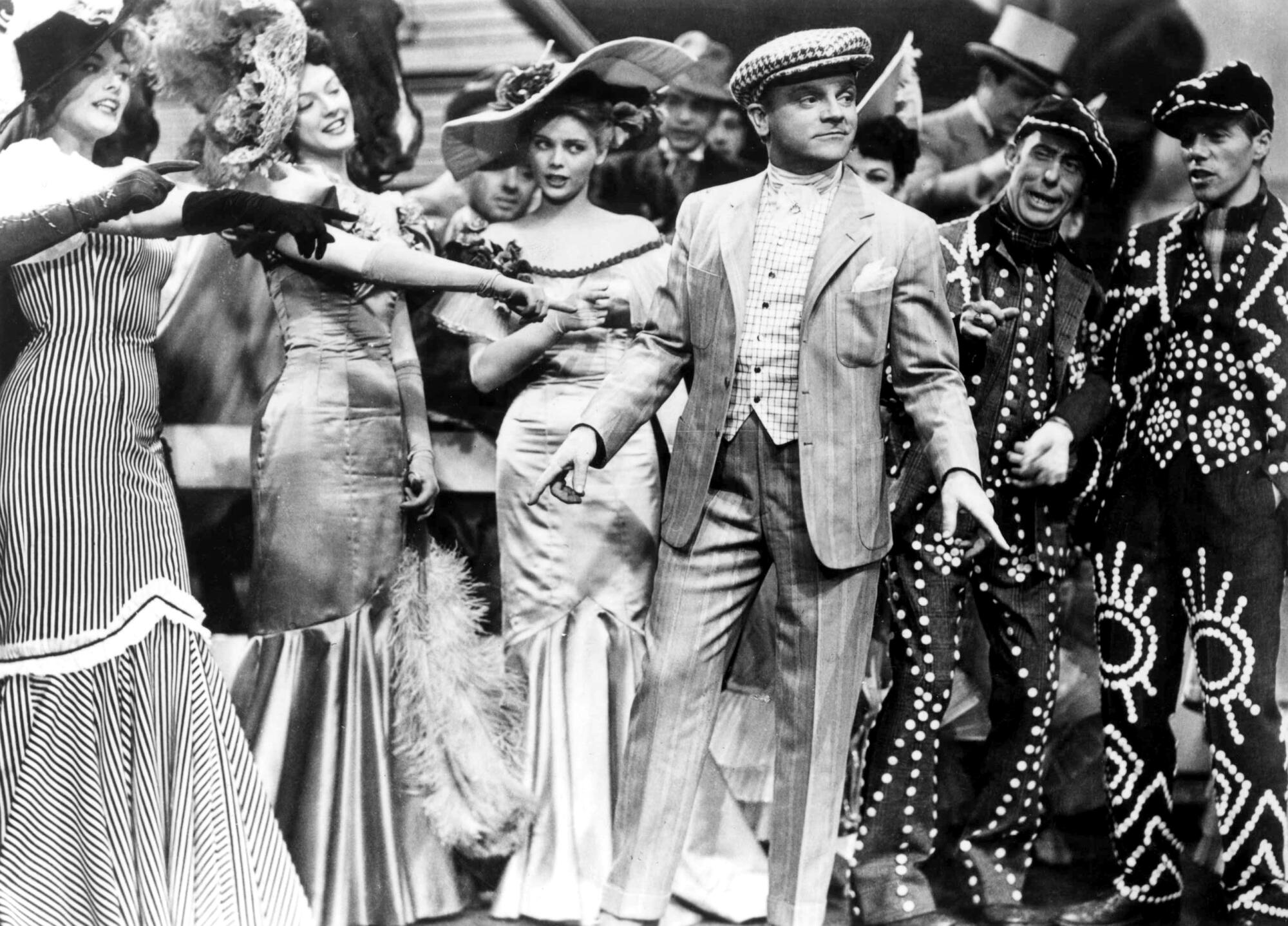
James Cagney stars as George M. Cohan in the 1942 biographical musical drama “Yankee Doodle Dandy.”
(Turner Entertainment)
An oldie but a goodie, this popular — and patriotic — musical drama, starring James Cagney as prolific composer-singer-showman George M. Cohan, was nominated for eight Academy Awards, including for picture, director (Michael Curtiz), lead actor and supporting actor (Walter Huston). Cagney won his only Oscar for the exuberant role. (He also received nominations for 1938’s “Angels With Dirty Faces” and 1955’s “Love Me or Leave Me,” another musical biopic.) “Yankee” took home additional statuettes for sound and, as the category was then called, best scoring of a musical picture.
‘Coal Miner’s Daughter’ (7 nominations)
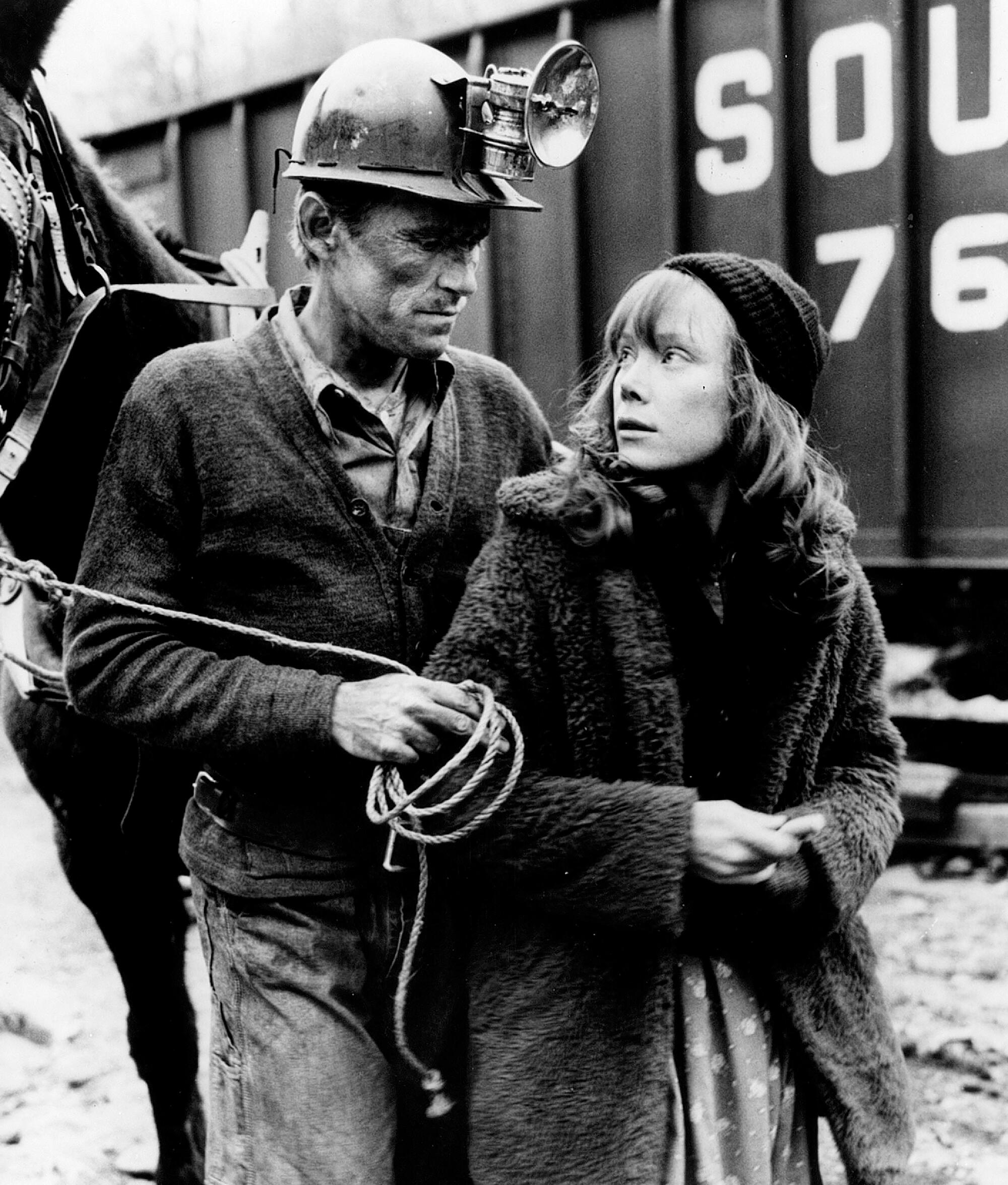
Levon Helm and Sissy Spacek in “Coal Miner’s Daughter.”
(Universal Pictures)
Country star Loretta Lynn may have been born a coal miner’s daughter, but Sissy Spacek was born to play her, as evidenced by the Oscar she won for her striking portrayal. The film, which spanned Lynn’s humble Kentucky youth and marriage at 15 through her extraordinary rise to chart-topping fame — and the nervous breakdown that nearly derailed her career — scored seven nominations, including for picture and adapted screenplay (by Thomas Rickman). Spacek, the film’s sole Oscar winner, would go on to earn four more lead actress nominations.
‘Bound for Glory’ (6 nominations)
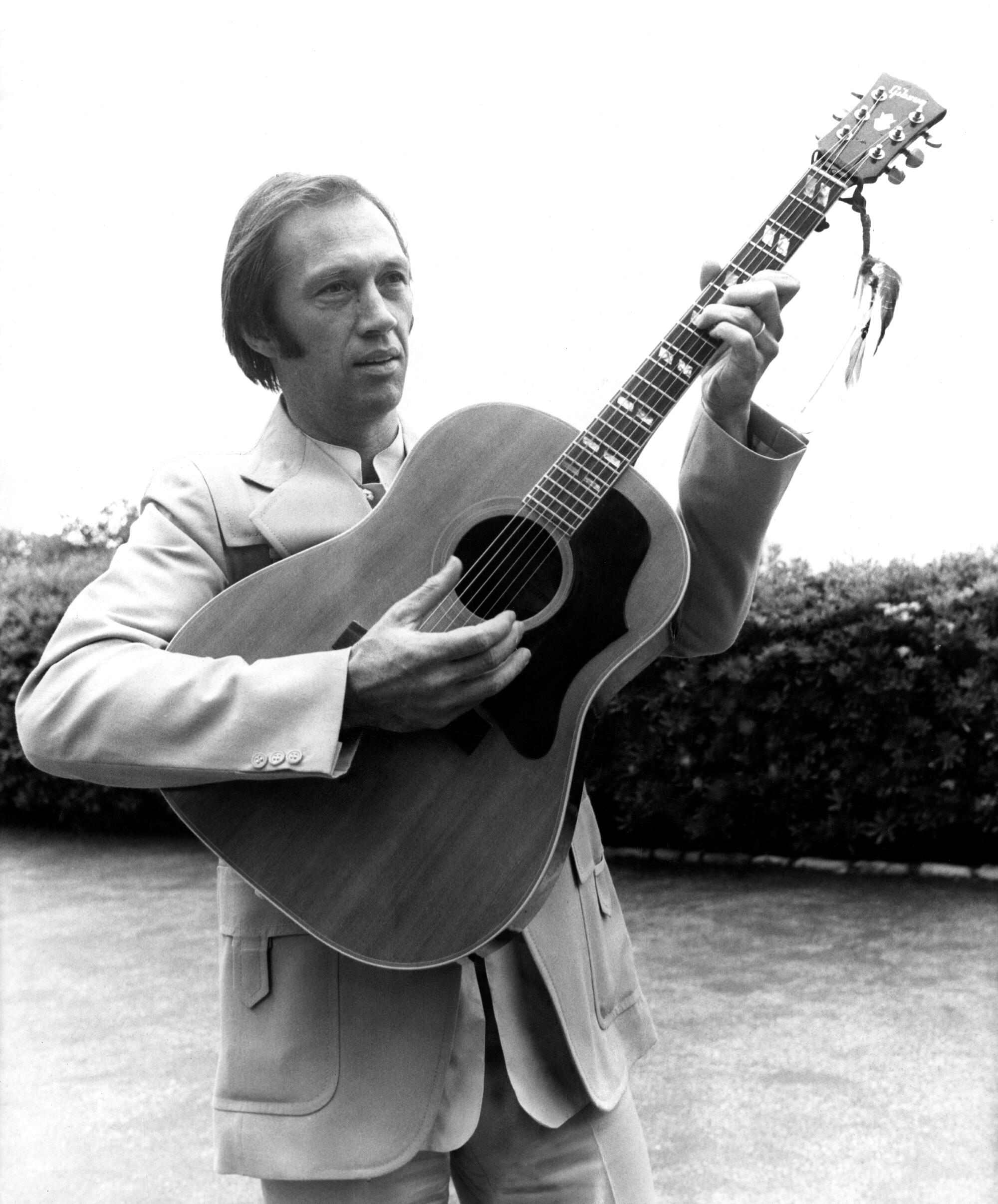
David Carradine, who played folk singer Woody Guthrie in “Bound for Glory,” strums a guitar at the 1977 Cannes Film Festival.
(Keystone / Hulton Archive via Getty Images)
Seminal American folk singer Woody Guthrie, who was a pivotal supporting character in last year’s “A Complete Unknown,” had a biopic all to himself in this lyrical drama directed by the great Hal Ashby. Based on Guthrie’s 1943 autobiography and starring David Carradine as the itinerant, socially conscious musician, the movie was nominated for six Oscars, including picture, adapted screenplay and film editing. It won for Haskell Wexler’s evocative cinematography and Leonard Rosenman’s sweeping score — but remained more of a critical than commercial success.
‘Ray’ (6 nominations)
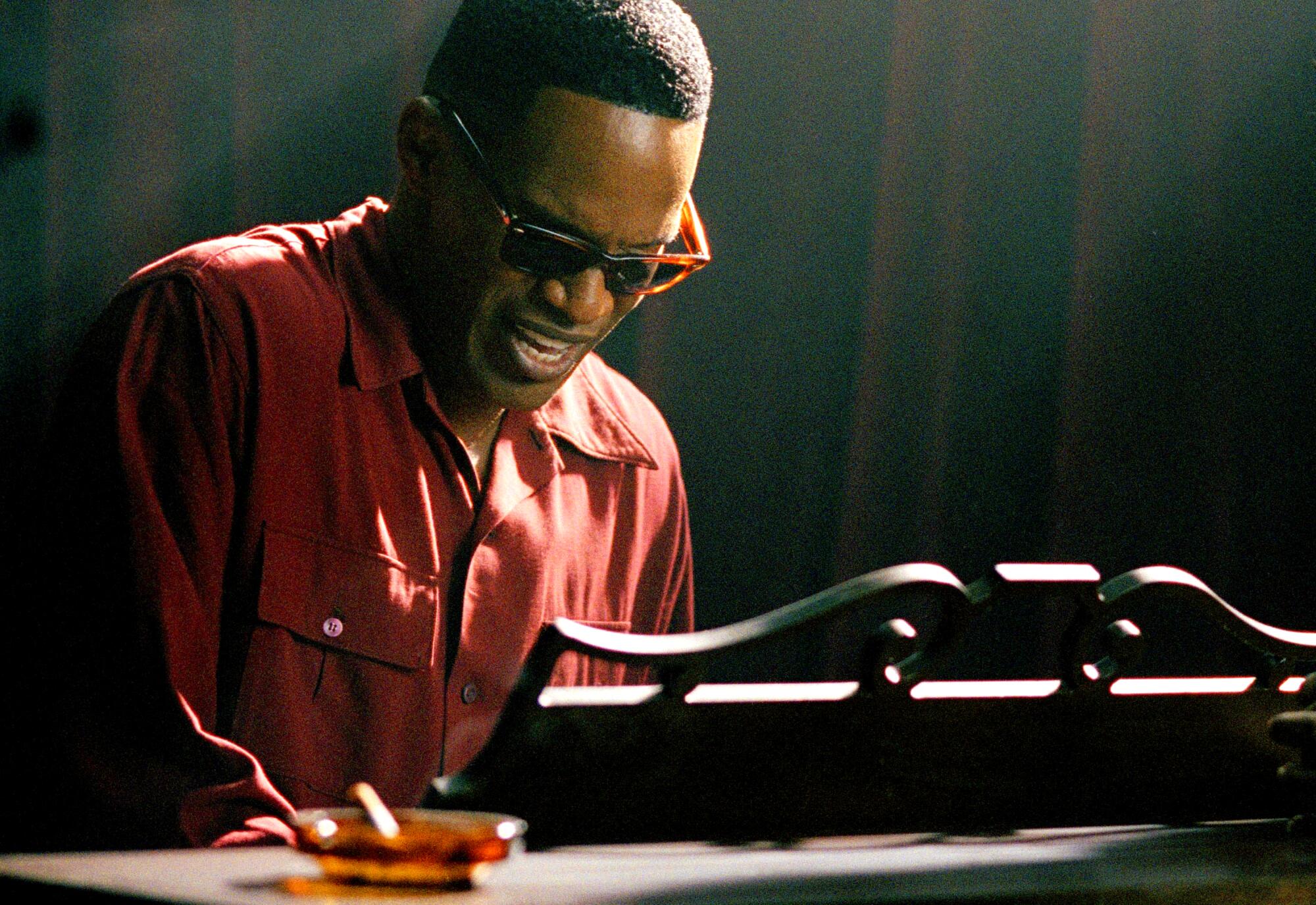
Jamie Foxx in “Ray.”
(Nicola Goode)
Jamie Foxx took home the Oscar, among many other prizes, for his vibrant embodiment of pioneering singer-songwriter-pianist Ray Charles. The ambitious box-office hit, which followed the influential crossover artist from his childhood in 1930s Georgia (when he went blind) through the late 1970s — and all the successes, detours and struggles in between — garnered six nominations, including best picture and director (Taylor Hackford). Along with the lead actor award, “Ray” won for sound mixing. Foxx also earned a supporting actor nod that same year for his fine dramatic work in Michael Mann’s “Collateral.”
‘Bohemian Rhapsody’ (5 nominations)
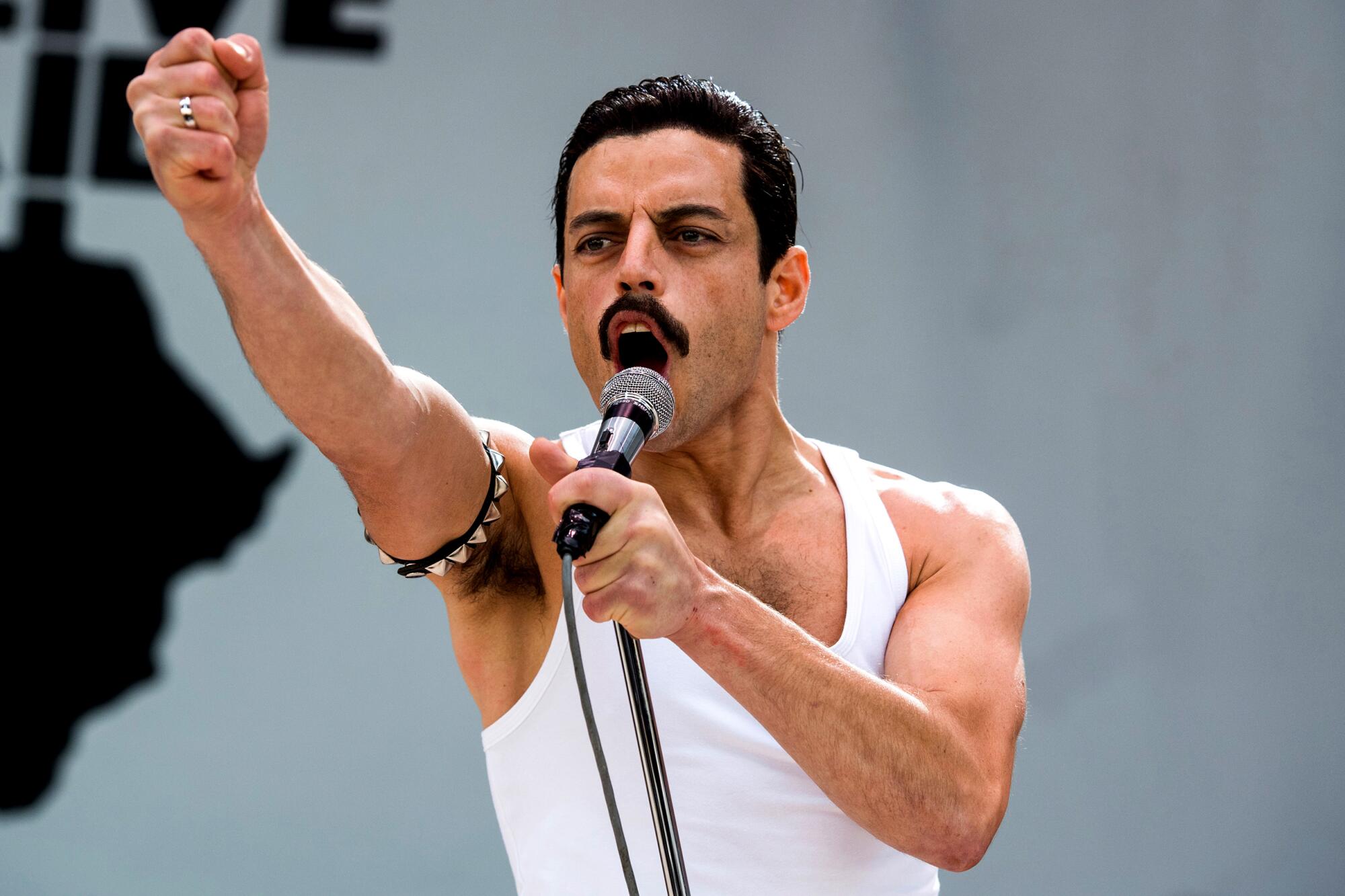
Rami Malek in “Bohemian Rhapsody.”
(Alex Bailey / Twentieth Century Fox)
Audiences and Academy voters were kinder than many critics to this often dazzling, mega-grossing ($910 million worldwide) portrait of groundbreaking Queen frontman and co-founder Freddie Mercury, who died of complications from AIDS in 1991. Although called out for sanitizing the queer, vocally gifted musician’s private — and not-so-private — life, the movie was nominated for five Oscars, including best picture. With wins for film editing, sound editing, sound mixing and, most notably, lead actor (for Rami Malek’s captivating turn as Mercury), the picture amassed the most statuettes in that year’s race.
‘Lady Sings the Blues’ (5 nominations)
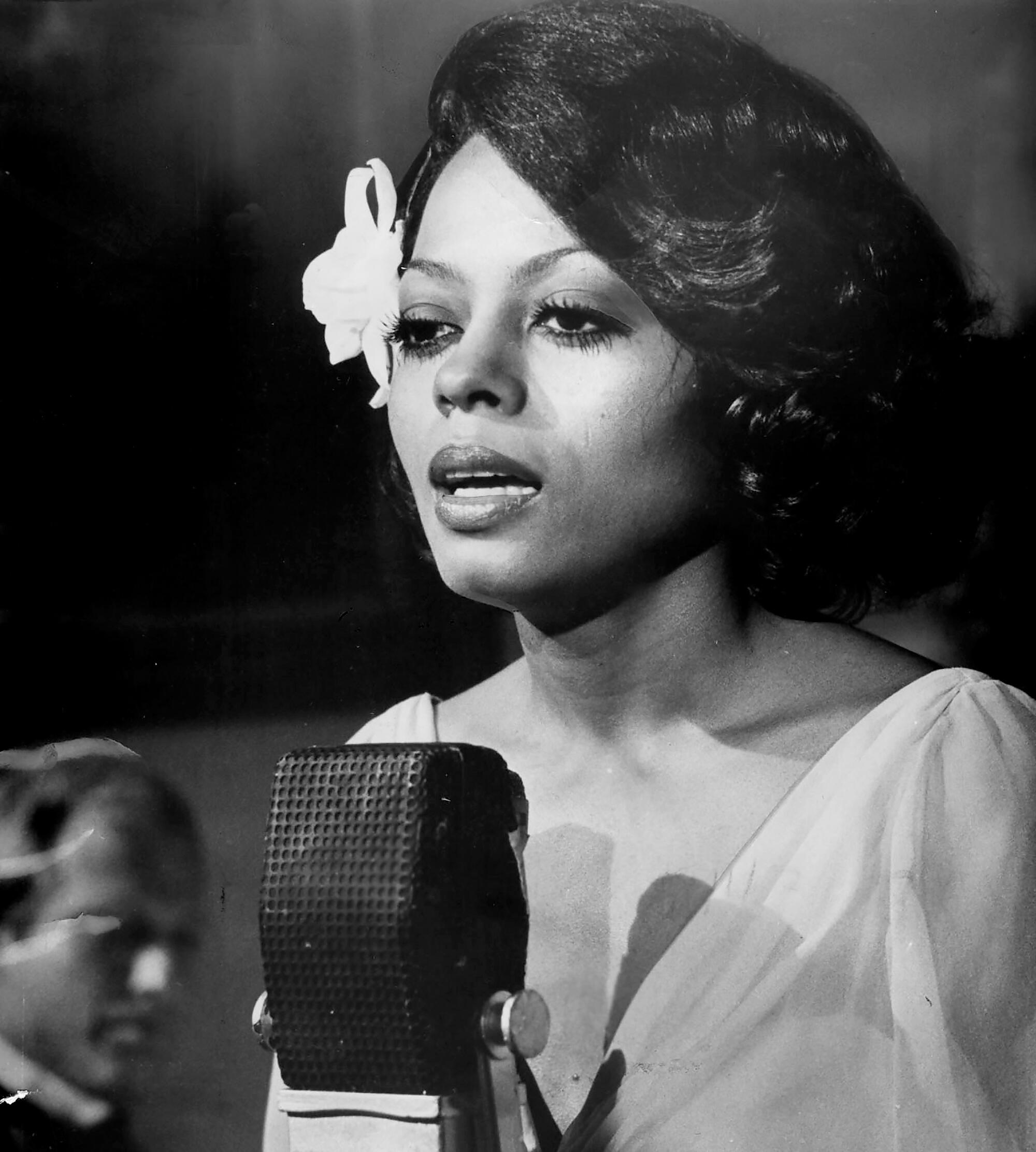
Diana Ross in “Lady Sings the Blues.”
(Paramount Pictures)
Diana Ross made an auspicious feature acting debut in this sprawling biopic about the hardships and triumphs of celebrated jazz singer Billie Holiday. An iconic music star herself — she’d recently left the hit-making Supremes to go solo — Ross earned her first (and only) Oscar nod for her galvanizing recreation. The film received four additional nominations, including for original screenplay and costume design, but won none. Ross, who lost that year to Liza Minnelli in “Cabaret,” would go on to star in just a handful of other films. (“Mahogany,” anyone?)
‘Walk the Line’ (5 nominations)
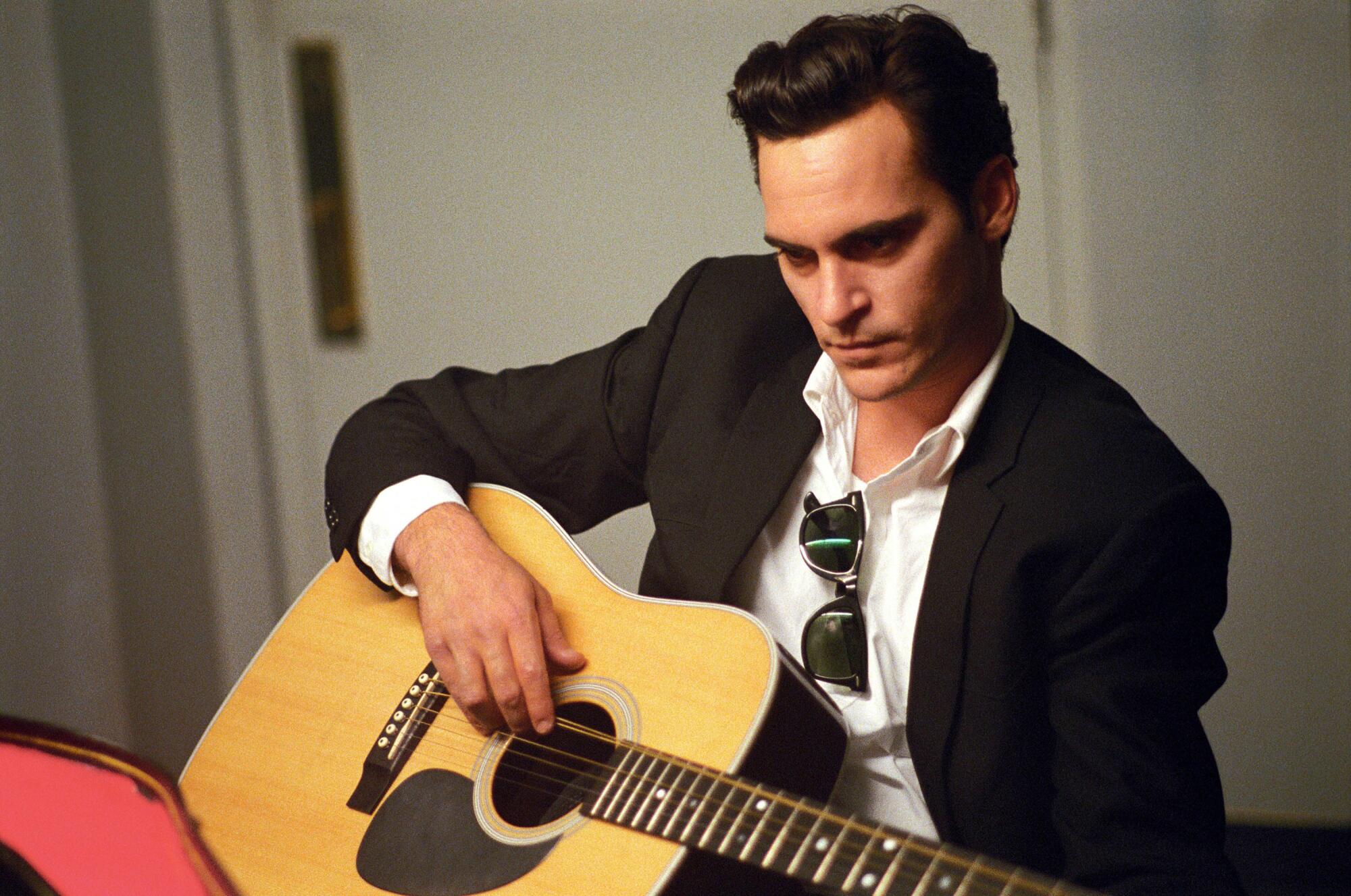
Joaquin Phoenix in “Walk the Line.”
(Suzanne Tenner / 20th Century Fox)
The life of country-folk-rockabilly star Johnny Cash received a polished, emotionally rich big-screen treatment thanks to fine direction by James Mangold (who co-wrote with Gill Dennis) and powerful star turns by Joaquin Phoenix as the complicated Man in Black and Reese Witherspoon as his resilient wife, singer June Carter Cash. The popular, well-reviewed drama collected five Oscar nominations: lead actor and actress, costume design, film editing and sound mixing. Witherspoon captured Oscar gold — along with a raft of other awards — for her memorable performance.
